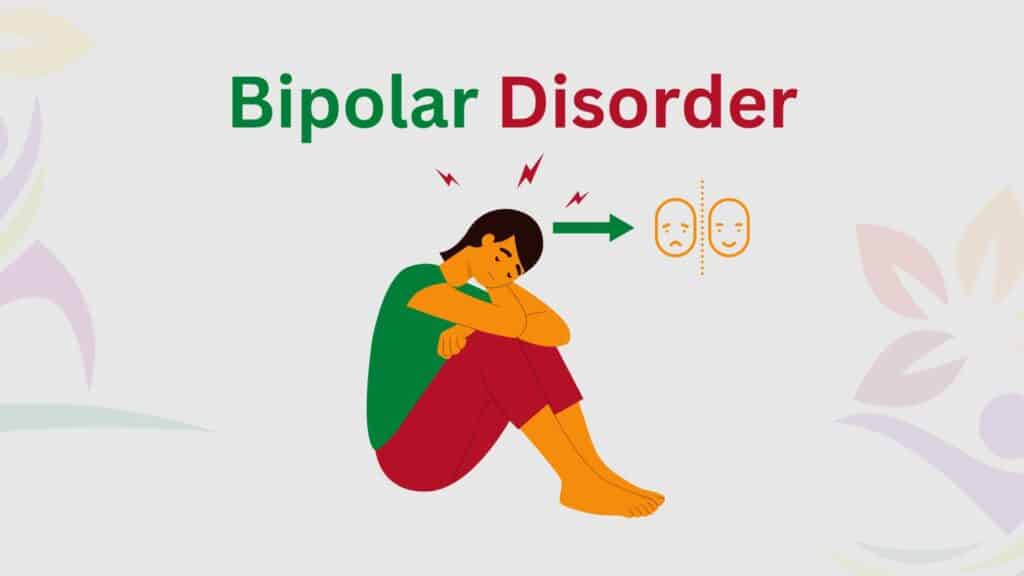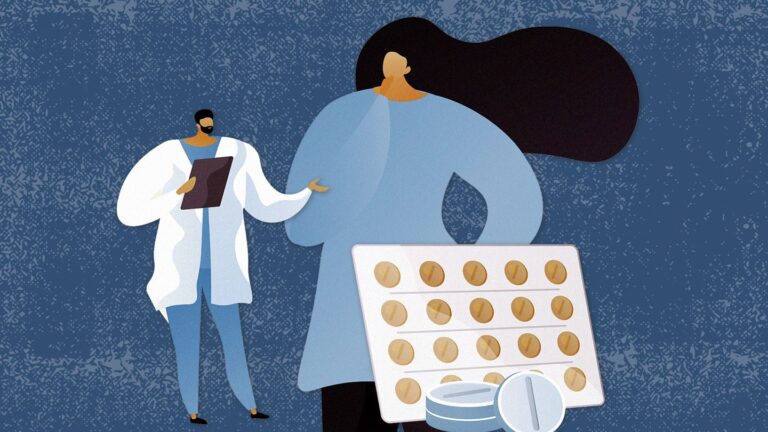Bipolar disorder, formerly known as manic depression, is a mental health condition characterized by extreme mood swings. These shifts include emotional highs, known as mania or hypomania, and lows, referred to as depression.
While everyone experiences changes in mood, the intensity and duration of bipolar episodes can interfere with daily life. Some individuals may experience only one manic or hypomanic episode in their lifetime, while others face recurring cycles. This variability underscores the importance of understanding the different types of bipolar disorder, their causes, and treatment options.
Understanding Bipolar Disorder

Bipolar disorder is a chronic condition, typically first appearing in early adulthood. It is believed to have strong genetic underpinnings, with around 80% of cases influenced by hereditary factors. While its exact cause remains unknown, contributing factors include brain chemistry, environmental stressors, and life events.
With proper treatment and support, individuals with bipolar disorder can manage symptoms effectively and enjoy a good quality of life.
Types of Bipolar Disorder
Bipolar disorder is not a single condition but a spectrum of related disorders.
Bipolar I Disorder
This type involves at least one manic episode lasting a week or more, often accompanied by depressive episodes. The manic phase can be intense, significantly disrupting daily life, and may require hospitalization.
Bipolar II Disorder
Bipolar II features hypomanic episodes, which are less severe than mania, along with prolonged depressive episodes. Although hypomania doesn’t cause the same degree of functional impairment as mania, the depressive episodes in bipolar II can be debilitating.
Cyclothymic Disorder
Cyclothymic disorder is characterized by less extreme mood swings, with symptoms of hypomania and mild depression that do not meet the full criteria for bipolar I or II. These mood changes are persistent, lasting for at least two years.
Mixed Episodes
Some individuals experience mixed episodes, where symptoms of mania or hypomania coexist with symptoms of depression. This can result in heightened energy levels paired with feelings of hopelessness or suicidal thoughts.
Symptoms of Bipolar Disorder
The symptoms of bipolar disorder vary depending on the phase: mania, hypomania, or depression.
Mania Symptoms
- Feeling euphoric or overly energetic.
- Decreased need for sleep.
- Racing thoughts and rapid speech.
- Impulsive or reckless behavior, such as overspending or unsafe sexual activity.
- Irritability and aggression.
Hypomania Symptoms
- Similar to mania but less intense and shorter in duration.
- May lead to increased productivity and creativity but can still disrupt routines.
Depression Symptoms
- Persistent sadness or feelings of hopelessness.
- Loss of interest in activities once enjoyed.
- Fatigue or lack of energy.
- Difficulty concentrating or making decisions.
- Suicidal thoughts or behaviors.
Psychosis Symptoms
During severe manic or depressive episodes, some individuals may experience psychosis, including delusions (false beliefs) or hallucinations (seeing or hearing things that aren’t there).
Causes of Bipolar Disorder
Bipolar disorder results from a combination of genetic, biological, and environmental factors.
- Genetics: A strong family history of bipolar disorder increases the likelihood of developing the condition.
- Brain Chemistry: Imbalances in neurotransmitters like serotonin and norepinephrine are thought to play a role.
- Environmental Factors: Stressful life events, trauma, or substance use can trigger episodes in susceptible individuals.
Triggers, such as sleep disruptions or significant stress, can cause mood episodes even in those actively managing the condition.
Treatment for Bipolar Disorder
Bipolar disorder requires long-term management to reduce the frequency and severity of episodes. Treatment typically combines medication, therapy, and lifestyle adjustments.
Medications
- Mood Stabilizers: Lithium is a common medication used to prevent mood swings.
- Antipsychotics: Often prescribed to treat manic episodes or psychosis.
- Antidepressants: Used cautiously to treat depressive episodes, often alongside mood stabilizers to avoid triggering mania.
Psychological Therapies
- Cognitive Behavioral Therapy (CBT): Helps individuals identify and manage negative thought patterns.
- Interpersonal and Social Rhythm Therapy (IPSRT): Focuses on stabilizing daily routines to manage mood changes.
Hospitalization
In severe cases, hospitalization may be necessary to ensure safety during acute manic, depressive, or psychotic episodes.
Education and Support
Education about bipolar disorder empowers individuals to recognize triggers and early warning signs of episodes. Community programs and peer support groups also provide valuable emotional and practical support.
Self-Management Tips for Bipolar Disorder
- Stick to a Routine: Consistent sleep and meal schedules help regulate mood.
- Monitor Symptoms: Keeping a journal can help identify patterns and triggers.
- Avoid Alcohol and Drugs: Substance use can exacerbate symptoms and interfere with medication.
- Stay Active: Regular exercise promotes overall mental health and reduces stress.
- Build a Support Network: Family, friends, and support groups provide encouragement and understanding.
Challenges and Outlook
Living with bipolar disorder can be challenging, but many individuals manage it successfully with treatment and support. Early diagnosis, adherence to treatment, and a proactive approach to self-care are key to leading a stable and fulfilling life.
Authentic Sources for Further Information
- National Alliance on Mental Illness (NAMI): www.nami.org
- MentalHealth.gov: www.mentalhealth.gov
- Johns Hopkins Medicine: www.hopkinsmedicine.org
- Depression and Bipolar Support Alliance (DBSA): www.dbsalliance.org
- Harvard Health Publishing: www.health.harvard.edu
Conclusion
Bipolar disorder is a complex condition, but with the right treatment and support, individuals can lead stable, fulfilling lives. Understanding its symptoms, types, and causes is the first step in managing the disorder effectively. Whether through medication, therapy, or lifestyle changes, there are many ways to help individuals with bipolar disorder navigate their journey toward wellness.
If you or someone you know may be experiencing symptoms of bipolar disorder, seek help from a mental health professional. Remember, with the right resources and support, recovery and stability are possible.


